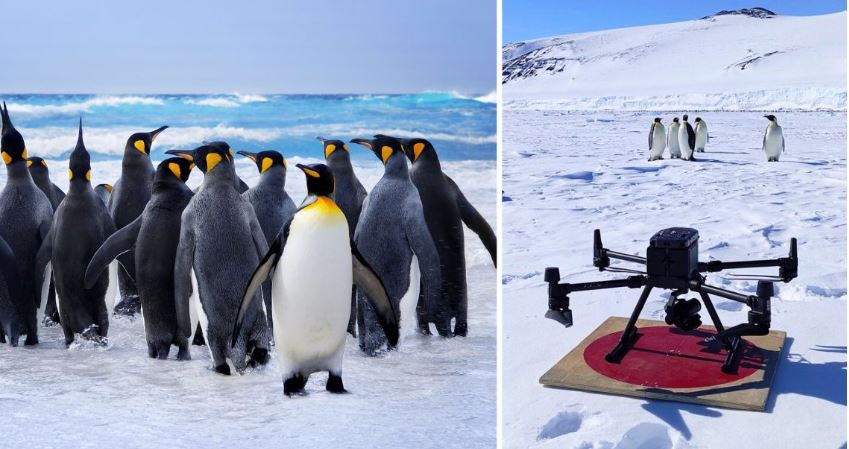ROME (ITALPRESS) – Artificial intelligence will be used for the first time in Antarctica as a tool to count and classify Adelia penguins living near Italy’s Mario Zucchelli Station. This is envisaged by a methodology developed by ENEA that brings together drones, artificial intelligence (AI) and the power of ENEA’s own CRESCO supercomputer. “The accuracy of the count was 97 percent for adult penguins and 89 percent for chicks, optimal values as they are very reliable,” explains Riccardo Scipinotti, ENEA researcher currently expedition leader at the Italian-French Concordia base on the Antarctic plateau, at an altitude of more than 3 thousand meters and 1.200 kilometers from the coast.These results were obtained by analyzing orthophotos acquired in the two penguin coves closest to the Zucchelli base (Edmonson Point and Adelie Cove), which have about 4 thousand and 10 thousand individuals, respectively. To enable researchers to make an estimate of the colony’s reproductive efficiency-one of the indicators of animal health and climate change-the count is repeated at two precise times of the austral summer, mid-November, the hatching period, and mid-January when the chicks are free to move around the penguin cove. “Specifically, the count was obtained through special drones whose technical characteristics make them suitable for flying in low Antarctic temperatures and flying over vast remote areas. In order to film some colonies, without disturbing the animals, it was necessary to exceed an altitude of 50m,” Scipinotti explains.The images taken are first processed by the CRESCO supercomputing cluster, active since 2017 at the Zucchelli station, which returns a high-resolution (about 1cm/px) georeferenced orthophoto of the penguin field directly.In fact, the excellent resolution of the image is sufficient to identify both adult penguins, which are about 60cm in size, and chicks, which at about 2 months of age barely reach a height of 30cm.The processed orthophoto is then processed by a specially trained neural network to recognize the penguins in the image, distinguishing them between adults and chicks. “ENEA’s CRESCO supercomputer, installed at ENEA’s Portici center, was used to train the neural network, which was provided with about 400 images with more than 3,000 penguins, always taken by drone under different exposure conditions and positions during the last eight research expeditions,” explains Samuele Pierattini, of ENEA’s Division for the Development of Systems for Computing and ICT.”Compared to manual spot counting by field personnel, this methodology is faster and allows monitoring of remote areas that are difficult for humans to access, while also reducing disturbance to animal species,” Scipinotti points out.The next step will be to refine the training of the network with the data acquired during the expeditions so as to increase the reliability of the network itself and to specialize it to also detect and discriminate Emperor penguins, another species that colonizes near the Mario Zucchelli Station.In addition, new technologies in the field of AI will be used to build a ‘computationally readable’ neural network that can be installed inside the drone’s electronics and provide, in real time, the count of detected penguins. “In this way, it would no longer be necessary to export raw data from Antarctica to be processed in the laboratories, but already complete information would arrive to make objective assessments and studies on the numerical status of the penguin population,” Pierattini concludes.Currently underway is the 40th expedition of the National Research Program in Antarctica (PNRA), funded by the Ministry of University and Research (MUR) and managed by the National Research Council (CNR) for scientific coordination, ENEA for planning and logistical organization of activities at Antarctic bases, and the National Institute of Oceanography and Experimental Geophysics (OGS) for technical and scientific management of the icebreaker ship Laura Bassi.
– ENEA press office photo -(ITALPRESS).

